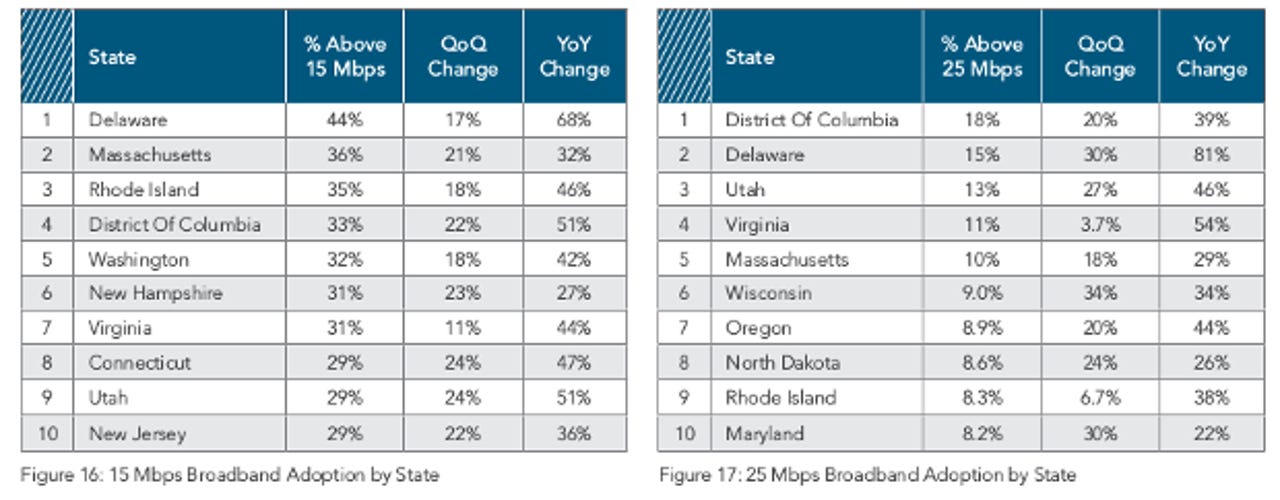The Internet is getting faster than ever but the US still lags behind

How fast is your Internet? My answer is: Never fast enough. Akamai Technologies in its latest First Quarter, 2015 State of the Internet Report has found though that for most of us the Internet is getting faster.The US, however remains outside of the world's top ten for Internet speeds.

The global average connection speeds among the top 10 countries all remained well above 10 Mbps, and six of the 10 had average speeds above 15 Mbps, as Ireland (17.4 Mbps), Sweden (15.8 Mbps) and the Netherlands (15.3 Mbps) joined South Korea (23.6 Mbps), Hong Kong (16.7 Mbps) and Japan (15.2 Mbps) in exceeding this benchmark in the first quarter.
By comparison, the United States lags far behind.
In the US, the Federal Communications Commission (FCC) recently redefined broadband as being at least 25 Mbps down and 3 Mbps up.
Globally, only 4.6 percent of unique IP addresses connected at average connection speeds of at least 25 Mbps, Still, that's a 12 percent increase over the previous quarter. South Korea led the world with a 31 percent broadband adoption rate. Its rate was nearly double that of second-place Hong Kong with its 17 percent adoption. In the United States, only five states had 10 percent or more of unique IP addresses that made the 25 Mbps cut.
25 Mbps speeds still aren't common in the U.S. 46 states have levels below 10 percent. The District of Columbia held the top spot in 25 Mbps broadband adoption with 18 percent. Delaware took second-place with a 15 percent adoption rate. Five of the top 10 states had adoption rates of at least 10 percent. Still, across the country all but two states showed quarter-over-quarter growth in 25 Mbps broadband adoption rates.
What's driving this speed increase in part is the new gigabit-speed internet offerings. Google Fiber has continued to expand, announcing in January that it would bring gigabit-speed fiber-to-the-home to 18 additional cities in four metropolitan areas: Atlanta, Georgia; Nashville, Tennessee; and Charlotte and Raleigh-Durham, North Carolina. Others are also bringing gigabit Internet to the last mile.
Some of these Internet speed boosts are coming from smaller ISPs. These include Paul Bunyan Communications' GigaZone Internet across Bemidji, Minnesota and surrounding rural areas; Mahaska Communications Group's high-speed service to Oskaloosa and Indianola, Iowa; Ting's offerings in Westminster, Maryland; and CenturyLink's fiber-to-the-home for some Utah housing developments.
Government is also getting into the act of improving broadband to the office and home. For example, Massachusetts Governor Charlie Baker has committed up to $50 million in capital funding to support broadband. In New York, York Governor Andrew Cuomo is offering $500 million incentives to telecommunications companies investing in networks delivering minimum broadband speeds of 100 Mbps. This is being done as governments realize that broadband equals local jobs.
Seventeen states still have 25 Mbps adoption levels of below 5 percent. A lot of work still needs to be done before the U.S. can compete with the world's most wired countries.
Related Stories: